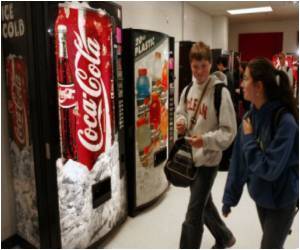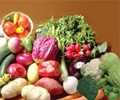High-calorie beverages are not permitted by national guidelines and yet a majority of U.S. elementary schools do not pay heed to this stricture as they continue to have these drinks available.

"The U.S. Department of Agriculture National School Lunch Program has a broad reach, serving meals to more than 31 million students in 2008," the authors write as background information in the article. However, "different regulations address meals and competitive foods," such as those found in vending machines and snack bars, in today's schools and "because children spend many hours in school, changes are needed to make the school environment healthier by limiting the availability of high-calorie beverages." The Institute of Science and Medicine also recommends that competitive venues like vending machines and snack bars be allowed to sell only bottled water, 100 percent juice and nonfat or 1-percent milk.
Lindsey Turner, Ph.D., and Frank J. Chaloupka, Ph.D., both of the University of Illinois at Chicago, conducted a nationally representative survey to examine the availability of high-calorie and sugar-sweetened beverages for sale in elementary schools. The authors examined beverages for sale in three types of competitive venues: vending machines, stores and snack bars/á la carte during lunchtime for the 2006-2007, 2007-2008 and 2008-2009 school years. Additionally, the study looked at types of milk available in school cafeterias including low-fat, whole and flavored milk.
Access to beverages for sale in any competitive venue in public elementary schools increased from 49 percent in the 2006-2007 school year to 61.3 percent in 2008-2009. Because of the increase in availability of competitive venues, the percentage of students with access to higher-calorie beverages also increased. Although 16.1 percent of students had access to only beverages recommended by the Institute of Medicine guidelines in the 2008-2009 school year, 44.7 percent of students were able to purchase beverages not allowed by these guidelines. Percentages in private elementary schools followed a similar pattern as those found in public schools, with increases in access to beverages highest in á la carte sales.
During all three years of the study, a majority of public school students had access to higher-fat milk at lunch (77.9 percent in 2006-2007; 79.7 percent in 2007-2008 and 68.3 percent in 2008-2009); however, those numbers declined significantly during the course of the study so that by 2008-2009, 31.7 percent of students only had access to lower-fat milk. Additionally, during the 2008-2009 school year, 92.1 percent of public elementary school students at schools participating in the National School Lunch Program could purchase flavored milk at lunch on most days and 98.4 percent could purchase flavored milk on some, most or all days.
"Our results show some encouraging changes in the availability of healthy beverages in schools, but there are many more opportunities for change," the authors conclude. "…much work remains to be done to reduce the availability of unhealthy beverages in elementary schools in the United States, and we encourage policy makers, school officials and parents to work together to address this important issue."
Advertisement
Source-Eurekalert










